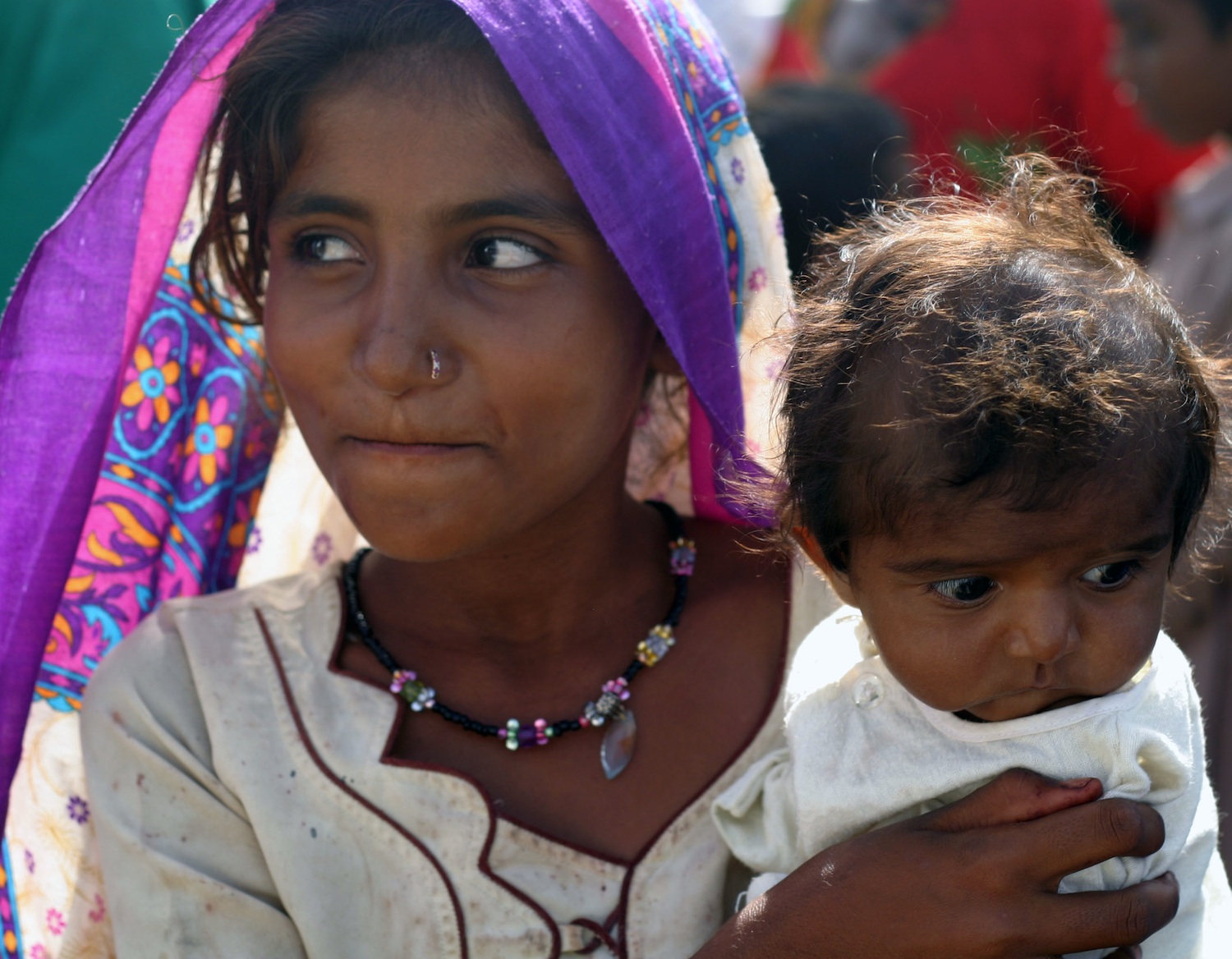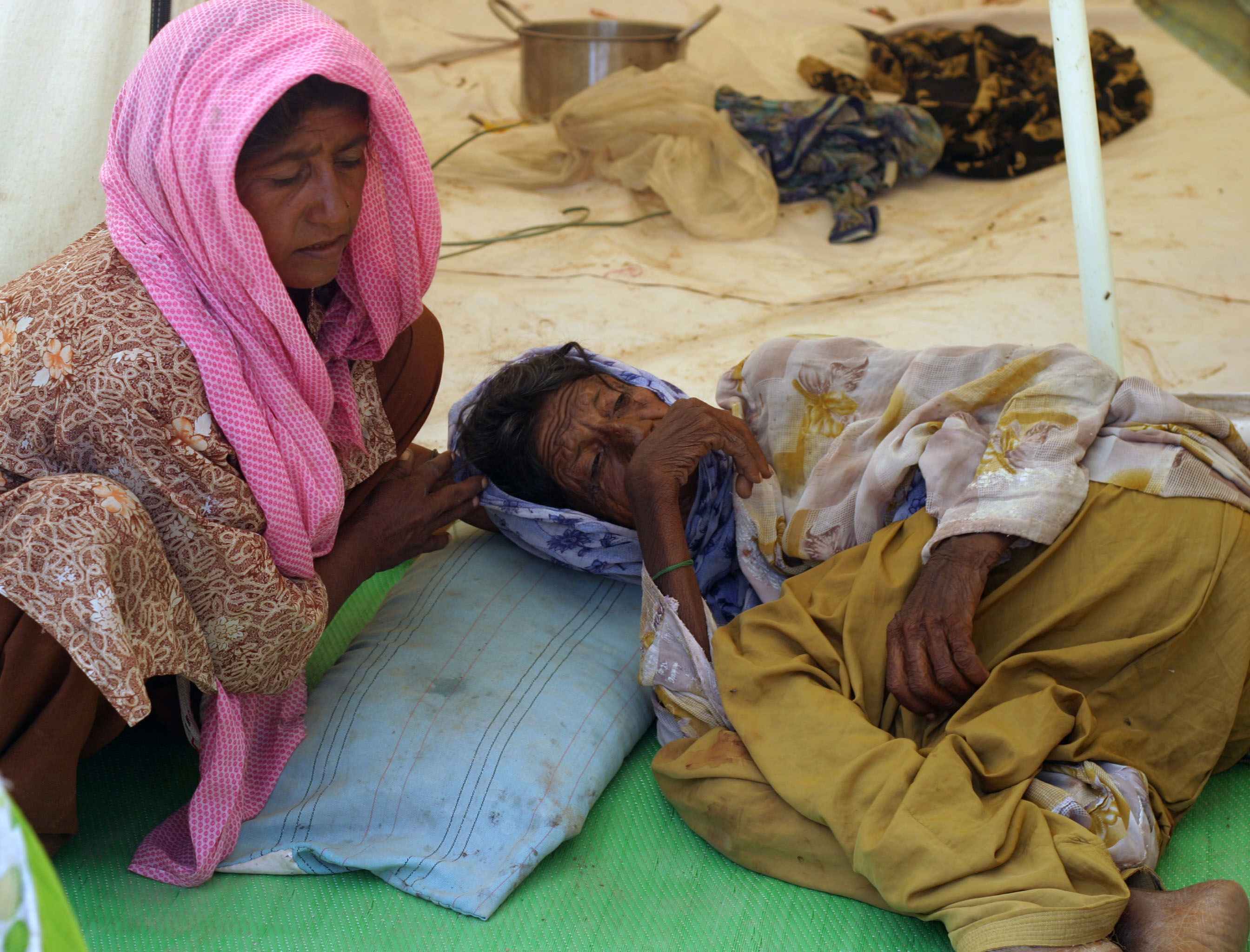
I arrive in Karachi, Pakistan shortly after the nation's torrential monsoon rainfall displaced an estimated 20 million people and left countless others destitute. Known locally as "The Great Flood of 2010," the natural disaster is one of the worst calamities to ever hit Pakistan — a country that is no stranger to earthquakes and cyclones, droughts and monsoons, drone attacks and political violence. Aside from displacing millions of Pakistanis, the flood is also responsible for partially collapsing the country's bridges, eroding its canals, submerging its railways, and disrupting its crop cycle. In some parts of Pakistan, the floods have caused petrol prices to double and food prices to triple. As the media coverage of more recent world events overshadows that of Pakistan's unprecedented flooding, the crisis continues unfolding in the populous southern province of Sindh and in the adjacent province of Balochistan.
Many meteorologists, academics, and sociologists have speculated on the causes of the floods and the reason why the floods wrought such havoc on the nation. Although it's too early to say for certain, several commentators have noted that climate change contributed to unusually heavy rainfall this year, and the deluge from melting glaciers added to the problem. They note that illegal clear-cutting in Pakistan had depleted the forest's subcutaneous layer that once sponged up excess water. Worse yet, a growth in the population of Pakistan drove people to inhabit the inhospitable banks of the Indus River, which made them extremely vulnerable to changes in water levels. The majority of those who fled the flooded areas — mainly the country's rural poor — remain housed in makeshift tents that are staffed by international organizations, private philanthropists, or military personnel.
Waiting for my baggage in Karachi, I read Pakistan's largest newspaper, Dawn, and learn that a Pakistani official in a flood-affected region has just warned Richard Holbrooke, U.S. special envoy to Pakistan, that 200,000 refugees have no access to latrines in the camps. The official, Manzoor Ali Shaikh, told Holbrooke that the camps were an ideal breeding ground for potentially fatal diseases such as dysentery, cholera, and malaria. He concluded by saying, "this is a time bomb waiting to explode." Indeed, even Pakistan's prime minister Yousuf Raza Gilani admits the government is "seriously concerned" about the potential spread of epidemic diseases in the flood-hit country. Tomorrow, I will visit camps in one of the worst hit regions, Sindh province, and speak with field workers in mobile clinics.
Jinnah International Airport in Karachi is full of posters and banners soliciting donations on behalf of the millions affected by the floods. Yet, over dinner with some Pakistani friends, I quickly learn that everyone has a different opinion on who should direct the flood relief operations. Some insist that the mosques are the ideal community center equipped for distributing aid, but others fear that religious minorities will be excluded from any such effort. Some believe the government should raise funds to support the refugees, but others are certain the Pakistani government is capable of nothing beyond siphoning off money to corrupt officials. Some invest hope in the international community to help Pakistan recover, but others scoff that foreigners regard Pakistan as a country of "beards and guns" — a country unworthy of sympathy. Some hope that respectable non-profit organizations will lead relief efforts, but others say these organizations have massive overhead costs and rarely accomplish any sustainable change. Some believe the military is the only apparatus sophisticated enough to coordinate large relief efforts, but others fear the military will opportunistically ingratiate itself with the country's destitute and then stage a coup against the civilian government—a government that will seem weak and ineffective in comparison.
The only area of consensus seems to be that ordinary Pakistanis have responded to the suffering within their country's borders by putting a halt to their ordinary lives and donating not only their money but also their time and expertise to rebuild their country. A Pakistani friend, Toxy Cowasjee, insists that, "the story that is not being told is that of a resilient civil society." She sets up times for me to meet a female doctor from the U.S. who gave up her lucrative practice to empower Pakistani women to take control of their health; a fashion designer in Karachi who converted his warehouse into a humanitarian aid facility called "United Pakistan;" and, an architect in the northern frontier who left his firm to help teach flood victims to build rafts and floats. "The one good thing about the floods is that they may give ordinary Pakistanis the opportunity to rebuild their own country for once," says Cowasjee.




